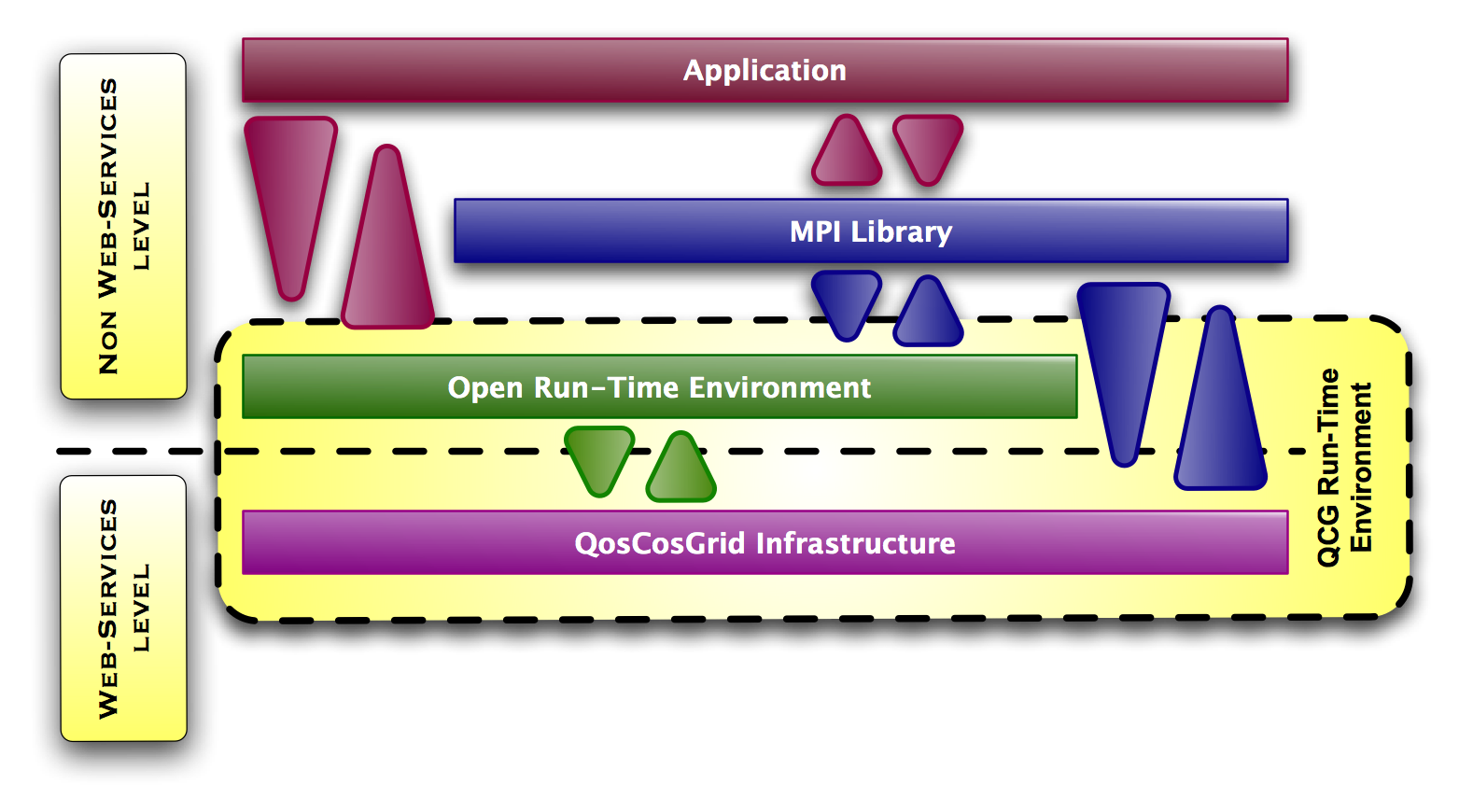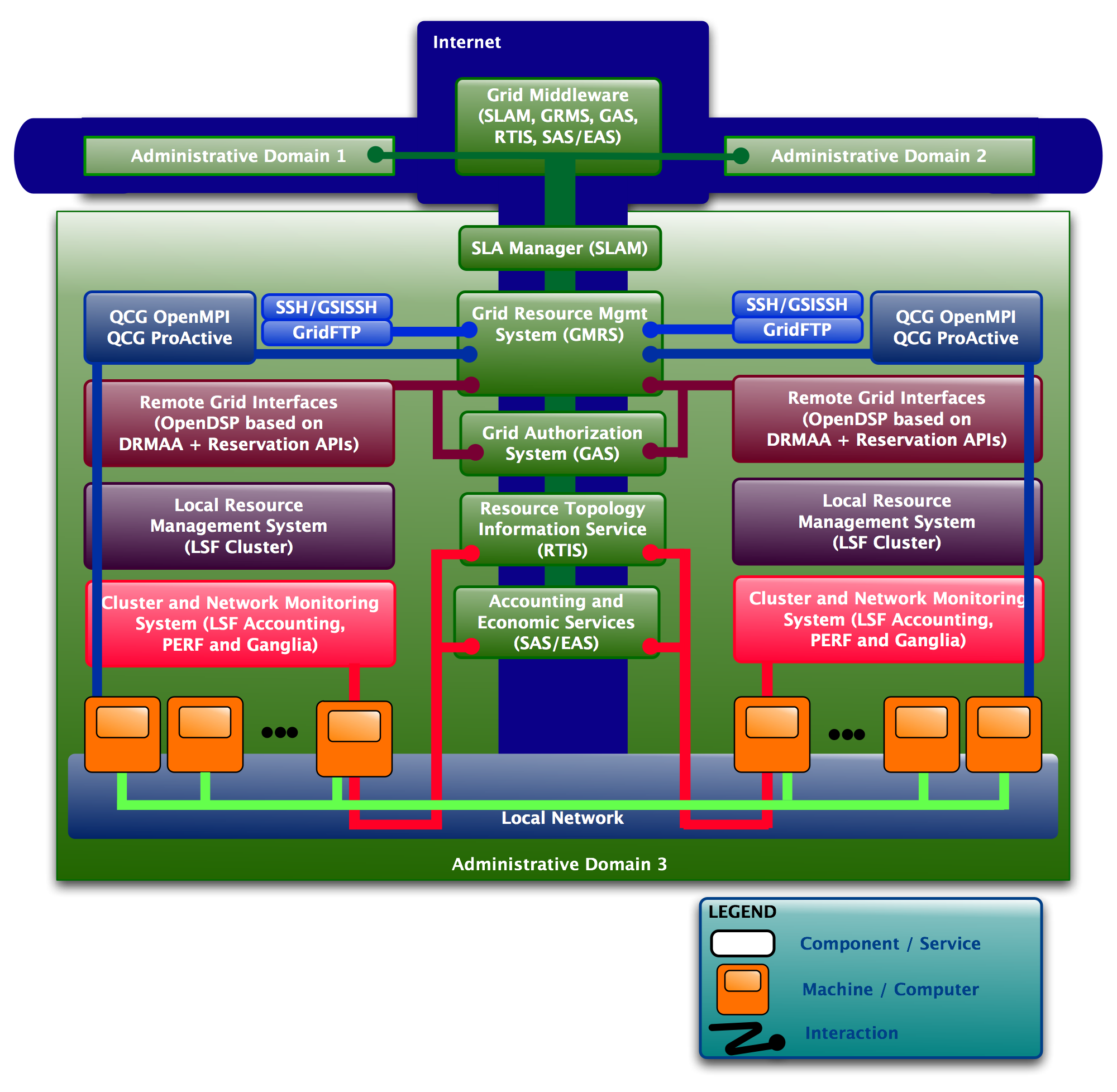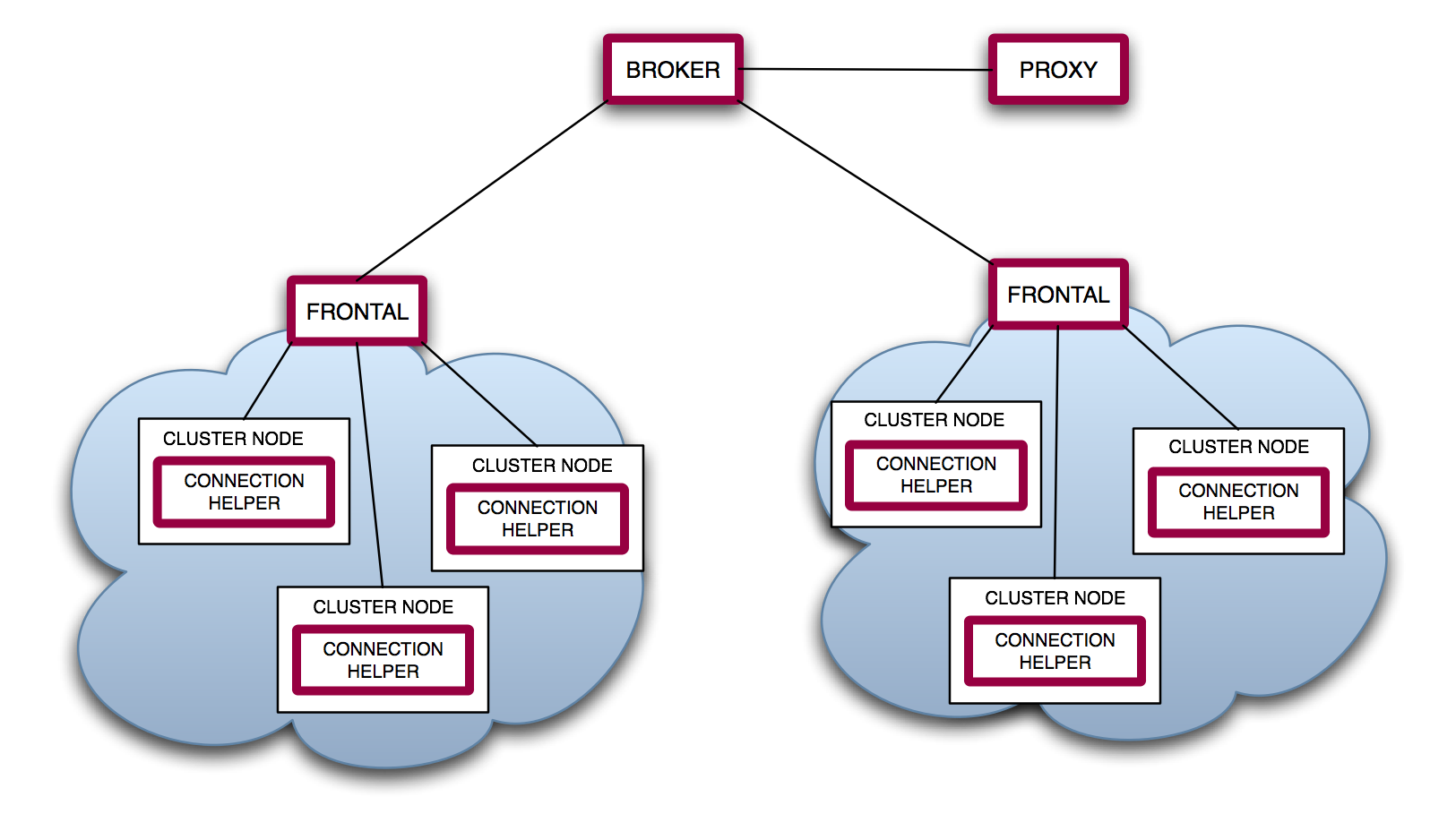download
QCG-OMPI (approx. 11MB).
QCG-OMPI is a grid-oriented MPI implementation based on
OpenMPI 1.3a1. An extended run-time environment provides
features needed to execute MPI applications on grids (clusters
of clusters, or federations of clusers), and specific
instructions are featured to allow efficient programming on
such machines.
OpenMPI's run-time environment is extended by a set of
light-weight grid-services, which are part of the QosCosGrid
infrstructure.

The grid-specific features of QCG-OMPI are the following:
- Firewall and NAT bypassing
- Support for heterogeneous resources
- Run-time topology discovery
The QosCosGrid organization is based on the concept of
administrative domains. An administrative domain may be a
partner. Typically, an administrative domain is located behing
a firewall, may be using private adresses with Network Address
Translation and Port Address Translation, and uses local
system administration policies. A set of services is running
in each administrative domain, namely, from the bottom to the
top of the software stack, a monitoring system, a resource
management system, an interface for a DRMAA, and an
environment for parallel applications.
A set of higher-level services are used to coordinate
resources. For instance, a global accounting service is in
charge of counting the platform usage for users, a global
resource management system coordinates grid-level
reservations...

QCG-OMPI is targeting institutional grids: several partners
share local resources, clusters, with each other. They can
then use a larger-scale platform than what they can access
locally. Clusters are interconnected through a public network:
the Internet. Therefore, they must be protected by
firewalls. On the other hand, an application which is spanning
across the grid wants its processes to be able to communicate
with each other. Disributed computing on grids is facing two
orthogonal problems: connectivity (within applications) and
security (against the outside world).
Usual solutions consist of opening a given range of ports in
the firewall and configuring the MPI library in order to keep
connections within this range of ports. It is used by
MPICH-G2, a grid-oriented version of MPICH that relies on the
Globus Toolkit. I also wrote a patch for OpenMPI which was
integrated into the 1.3 branch in order to be able to use this
port range limitation. Another solution, used by PACX-MPI and
GridMPI, uses local relay daemons and does not need more than
one open port on the firewall. Still, it needs a leak in the
security of the clusters. Moreover, processes have to share
the bandwidth of these relay daemons, and have to go through
an extra hop.
QCG-OMPI features a set of techniques in order to be able to
establish inter-cluster connections in spite of fully
closed firewalls. These techniques were initially
developped
in PVC and were adapted to be used
in the architecture of QCG-OMPI. These techniques include:
- Direct connection: if no firewall is placed between two
processes, they communicate directly with each other.
- Port range technique: if a range of ports is open in the
firewall, communications use them.
- Reverse connection: if some processes are not located
behind any firewall, communications are reversed in order
to make other processes connect toward those
processes.
- Traversing TCP: this advanced technique is using the
TTCP protocol, developped for PVC, which consists of
re-injecting the TCP SYN packet, initially dropped by the
firewall, in the server's TCP stack. This technique
allows establishment of direct connections in spite of
firewalls.
- TCP Hole Punching: two simultaneous connections from
both sides of the firewall create a hole and establish
the connection.
- Proxy method: when none of the aforementioned techniques
can be used, communications use a relay daemon.
A distributed infrastructure is used to provide advanced
connectivity features. This infrastructure is made of a set of
distributed services located throughout the grid, and is
composing the grid-level part of the run-time environment of
QCG-OMPI.
A connection helper is running on each machine of the
grid. As indicated by its name, it helps local processes to
establish connections with remote processes.
A front-end component is running on each cluster:
the frontal. Connection helpers contact their local
frontal to obtain remote processes' contact information.
The broker is the highest-level component is invoked
when frontals cannot answer a request. When it answers a
request, the frontal tht issued the requests stores this
information and acts like a cache to be able to answer further
requests from their cluster more quickly and without any call
to the broker.
The proxy is a relay daemon used when no direct
connection is possible.

This infrastructure is deployed by a grid administrator. It
does not need any specific priviledge, and services can be
executed by any user. The deployment process generates
cluster-specific parameter files (MCA parameters) used by
mpiexec to access and use the web-service level of the
run-time environment.


